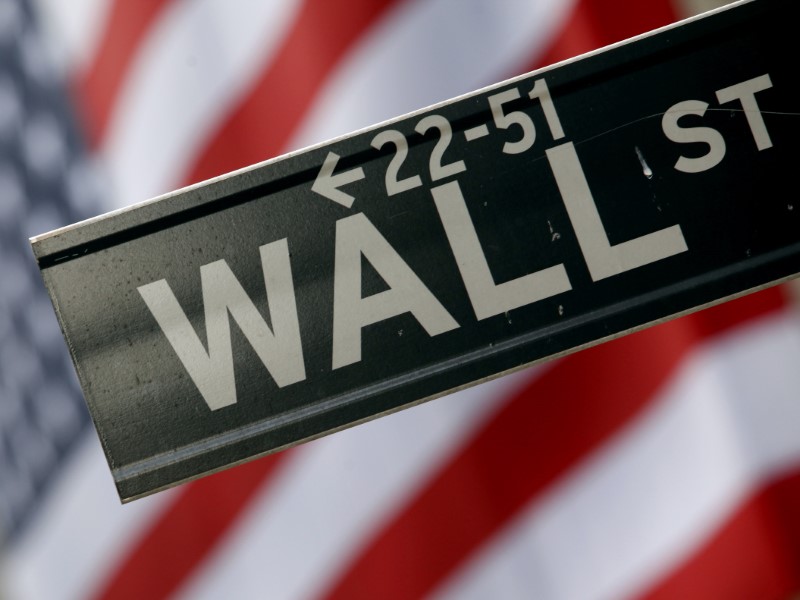 © Reuters. A street sign is seen in front of the New York Stock Exchange on Wall Street in New York
© Reuters. A street sign is seen in front of the New York Stock Exchange on Wall Street in New YorkBy Sinéad Carew
NEW YORK (Reuters) – Wall Street’s longest ever bull run should slow its charge to end the year around current levels as global trade tensions linger and earnings growth weakens, factors that will also limit gains in 2019, a Reuters poll found.
The S&P 500 () will end 2018 at 2,909, down slightly from its intraday record of 2,916.50 reached Wednesday, but up around 9 percent for the year, according to the median forecast from 55 strategists polled by Reuters in the last two weeks.
By year-end 2019 the benchmark will reach 3,100, up around 6.6 percent from the end-2018 forecast, the poll forecast.
“While the path of least resistance certainly feels higher short-term, we wouldn’t be surprised to see the S&P 500 finish the year at or around current levels,” said Leo Grohowski, chief investment officer at BNY Mellon Wealth Management in New York.
The S&P has already surpassed Grohowski’s year-end expectations, and he expects modest gains in 2019.
“We think the mid-term elections and a potential December rate hike by the Fed could lead to some profit-taking. That said, we are still overweight equities based on a positive 12-18 month forward assessment,” he said.
Earnings at S&P 500 companies are expected to rise 10 percent in 2019, according to Thomson Reuters data. That compares with 23.3 percent growth estimates for 2018 and 24.9 percent so far in the second quarter and 26.6 percent in the first three months of the year.
The S&P recently surpassed its previous record, reached in January this year, marking the current bull market as the longest in history.
But investors are concerned that U.S. President Donald Trump’s trade battle with China, alongside tensions with Europe, could hurt growth and earnings. A Turkish currency crisis has also rattled nerves and battered emerging markets.
“The Turkish lira crisis and U.S.-China trade tensions continue to cast a shadow on stock markets. However, stocks remain supported by strong corporate earnings with another blockbuster earnings season in Q2, and solid growth momentum in Q3 after the Q2 GDP rebound,” said John Praveen, chief investment strategist at PGIM Global Partners in Newark, NJ.
Earnings have been boosted by a massive corporate tax cut passed by Congress late last year and record stock buybacks by U.S. companies. While some strategists say the tax cuts have been largely priced in already, most said companies still favor stock buybacks over capital spending.
Funds originally earmarked for capital investment are being redirected to share buybacks, and the trend is “likely to continue for so long as geopolitical and trade-related uncertainties remain elevated,” according to Robert Phipps of Per Stirling Capital Management.
Phipps’ view is in the majority, with 12 of 22 respondents predicting boardrooms will not switch their bias to business investments from buybacks any time soon.
“Companies know that they can boost earnings per share by reducing the number of shares outstanding. However, they are unlikely to make long-term capital investments for so long as there is so much uncertainty,” said Phipps.
The Dow Jones Industrial Average () is expected to rise to 26,563 by the end of 2018, 0.2 percent below its January record of 26,616.71 but still up 7.5 percent for the year, according to estimates from 25 strategists.
(Additional polling by April Joyner, Chuck Mikolajczak, Stephen Culp, Alden Bentley in NEW YORK, Noel Randewich in SAN FRANCISCO and Indradip Ghosh in BENGALURU; Editing by David Gregorio)
Source: Investing.com





























